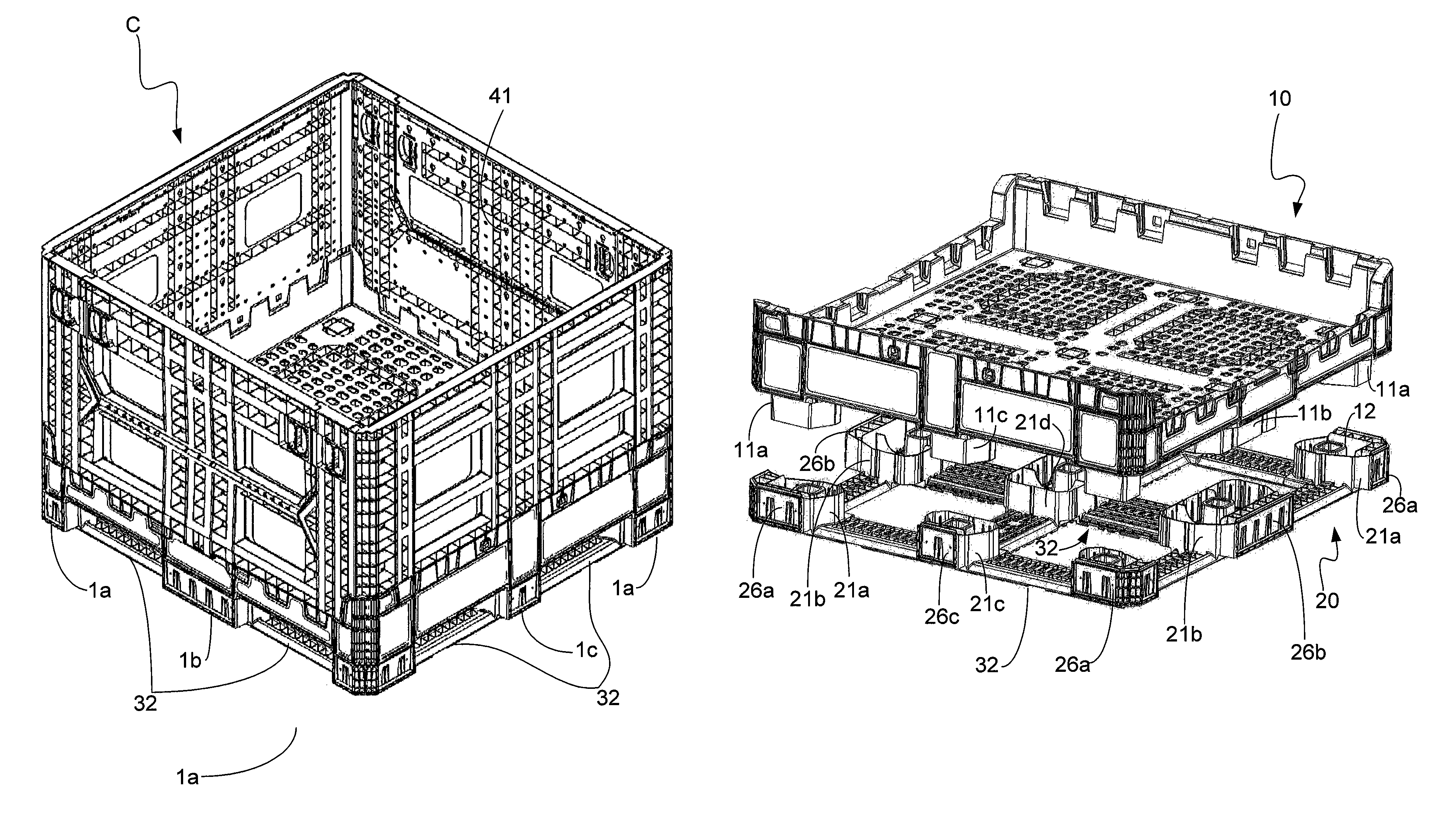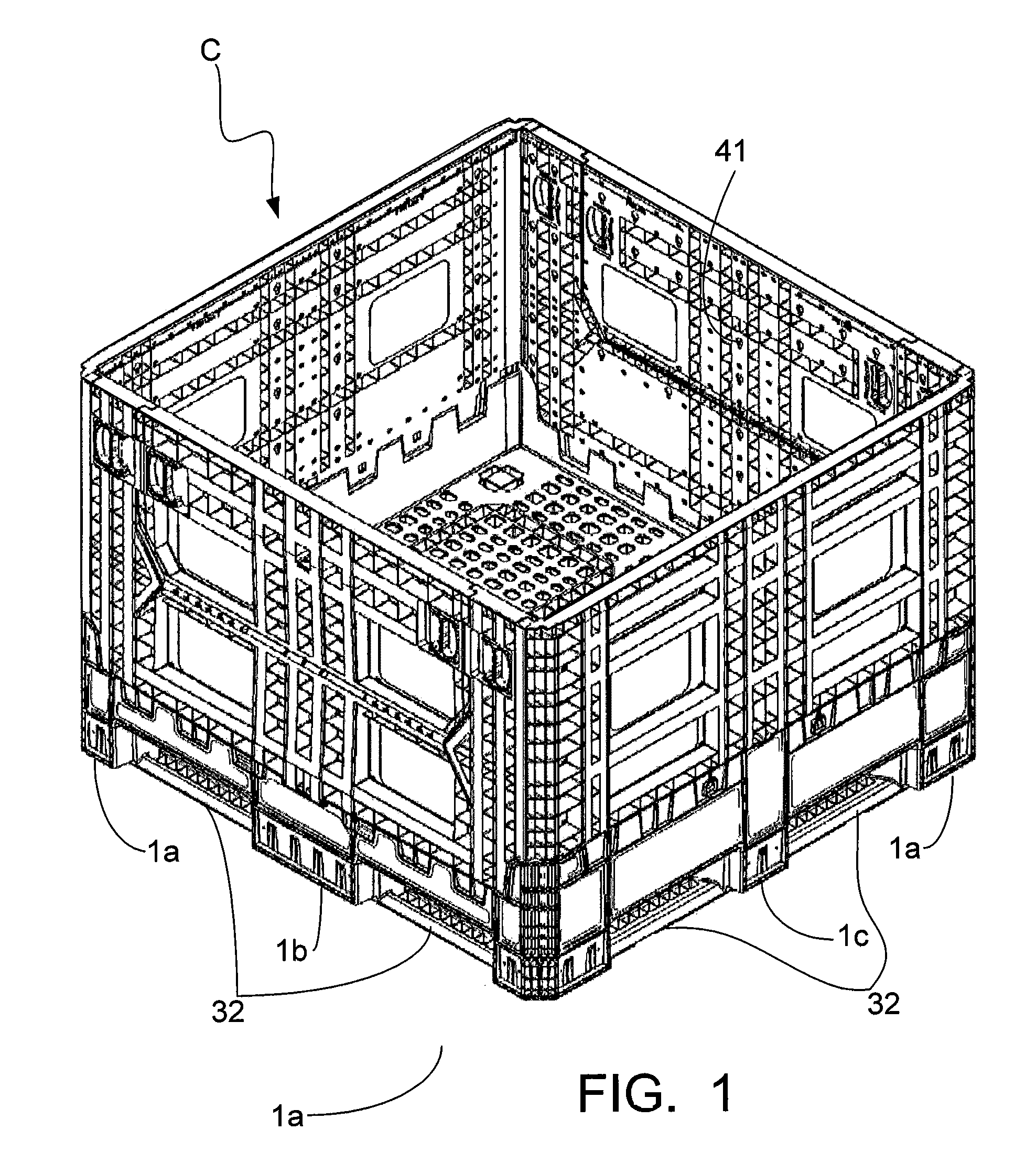Shipping container
a shipping container and container technology, applied in the field of reusable shipping containers, can solve the problems of shipping containers incurring shipping containers tend to incur significant damage to the fork strap and the feet, and the fork to impact one or more of the feet with significant force, so as to achieve easy dunnage acceptance, reduce the capacity of the container, and add additional weight and cost
- Summary
- Abstract
- Description
- Claims
- Application Information
AI Technical Summary
Benefits of technology
Problems solved by technology
Method used
Image
Examples
Embodiment Construction
[0036]The present invention is a novel shipping container C that addresses the problems described above. In known containers, post-like “feet” extend downward from the base to provide a gap under the base to allow the forks of a fork truck to slide under the base. The fork strap is then either integrally formed between the feet in a known pattern or snapped into the feet. This results in the feet being exposed to direct hits from the forks of the fork truck, and when they are damaged, causing the owner of the container to either have to replace the entire base, including the base portion, or to scrap the container. Considering the cost of disassembling the sides of the container from the base, containers with damaged feet are more frequently scrapped than repaired.
[0037]This invention includes a novel bottom unit design that comprises base 10 and separate fork strap unit 20 with fork strap unit 20 being easily replaceable and much more durable in foot portions 1 than known container...
PUM
 Login to View More
Login to View More Abstract
Description
Claims
Application Information
 Login to View More
Login to View More - R&D
- Intellectual Property
- Life Sciences
- Materials
- Tech Scout
- Unparalleled Data Quality
- Higher Quality Content
- 60% Fewer Hallucinations
Browse by: Latest US Patents, China's latest patents, Technical Efficacy Thesaurus, Application Domain, Technology Topic, Popular Technical Reports.
© 2025 PatSnap. All rights reserved.Legal|Privacy policy|Modern Slavery Act Transparency Statement|Sitemap|About US| Contact US: help@patsnap.com



